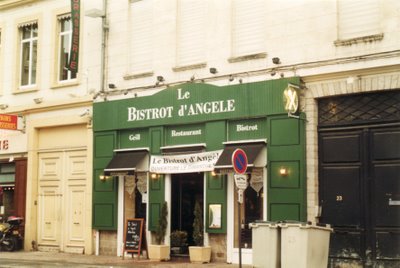
Here a view on the Church St Sauveur in Lille and the Sport-Palast. In the evening.
Perle de Rosée
Un blog photo pour l'agglomération où je suis née. A photo blog for the town constellation where I am born. Ein Photo-Blog für die Stadtballung, wo ich geboren wurde. Lille is not only Lille but with Roubaix and Tourcoing and all their suburbs, it has a million inhabitants.

You know Lille is not far away from Belgium and here is a restaurant called Le Lion Belge, The Belgian Lion. It is also near the Railway Station Lille Flandres. In this part of the town there are many cafe-houses, but you can find them overall in the town, from the big café for the rich peaple where you drink a coffee cup or a tea cup with a piece of chocolade to the café de quartier where the men which live not far are drinking too much alcohol, especially beer of the North or belgian beer. Above the white house with the square white stones is typical for the town style of the end of the nineteen century. The house in the back is like you see in renovation.
Clara.






